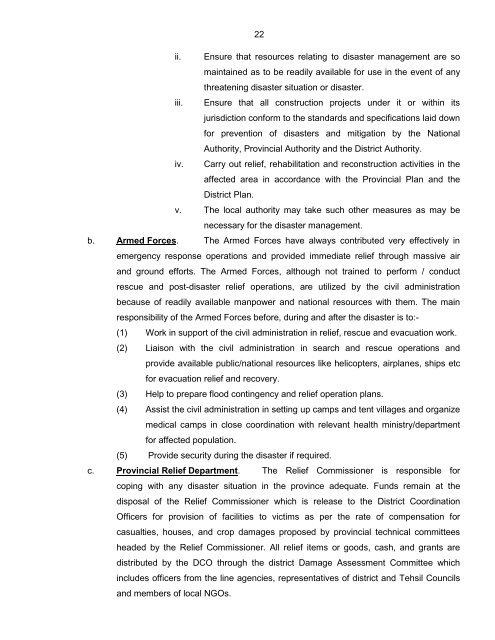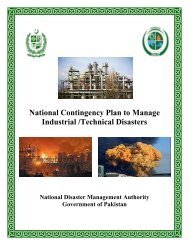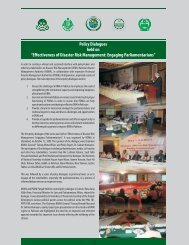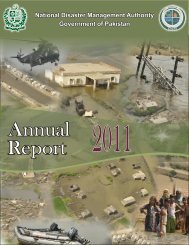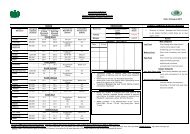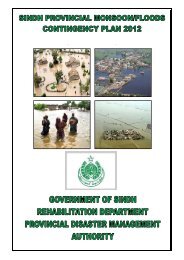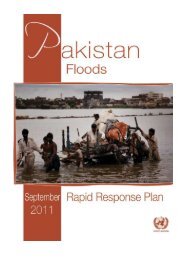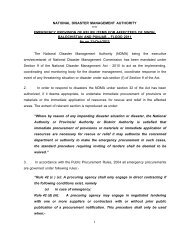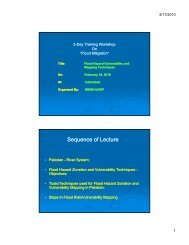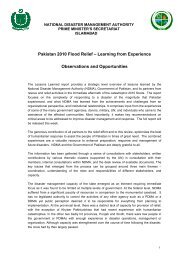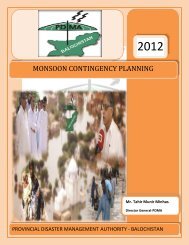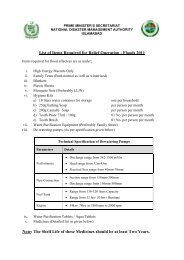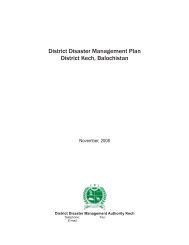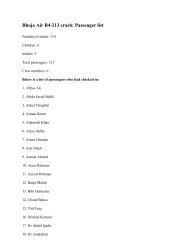National Disaster Response Plan (NDRP) March 2010 - NDMA
National Disaster Response Plan (NDRP) March 2010 - NDMA
National Disaster Response Plan (NDRP) March 2010 - NDMA
You also want an ePaper? Increase the reach of your titles
YUMPU automatically turns print PDFs into web optimized ePapers that Google loves.
22<br />
ii. Ensure that resources relating to disaster management are so<br />
maintained as to be readily available for use in the event of any<br />
threatening disaster situation or disaster.<br />
iii. Ensure that all construction projects under it or within its<br />
jurisdiction conform to the standards and specifications laid down<br />
for prevention of disasters and mitigation by the <strong>National</strong><br />
Authority, Provincial Authority and the District Authority.<br />
iv. Carry out relief, rehabilitation and reconstruction activities in the<br />
affected area in accordance with the Provincial <strong>Plan</strong> and the<br />
District <strong>Plan</strong>.<br />
v. The local authority may take such other measures as may be<br />
necessary for the disaster management.<br />
b. Armed Forces. The Armed Forces have always contributed very effectively in<br />
emergency response operations and provided immediate relief through massive air<br />
and ground efforts. The Armed Forces, although not trained to perform / conduct<br />
rescue and post-disaster relief operations, are utilized by the civil administration<br />
because of readily available manpower and national resources with them. The main<br />
responsibility of the Armed Forces before, during and after the disaster is to:-<br />
(1) Work in support of the civil administration in relief, rescue and evacuation work.<br />
(2) Liaison with the civil administration in search and rescue operations and<br />
provide available public/national resources like helicopters, airplanes, ships etc<br />
for evacuation relief and recovery.<br />
(3) Help to prepare flood contingency and relief operation plans.<br />
(4) Assist the civil administration in setting up camps and tent villages and organize<br />
medical camps in close coordination with relevant health ministry/department<br />
for affected population.<br />
(5) Provide security during the disaster if required.<br />
c. Provincial Relief Department. The Relief Commissioner is responsible for<br />
coping with any disaster situation in the province adequate. Funds remain at the<br />
disposal of the Relief Commissioner which is release to the District Coordination<br />
Officers for provision of facilities to victims as per the rate of compensation for<br />
casualties, houses, and crop damages proposed by provincial technical committees<br />
headed by the Relief Commissioner. All relief items or goods, cash, and grants are<br />
distributed by the DCO through the district Damage Assessment Committee which<br />
includes officers from the line agencies, representatives of district and Tehsil Councils<br />
and members of local NGOs.


